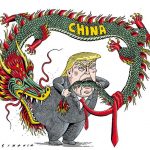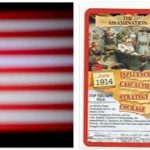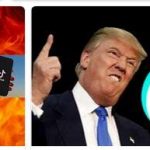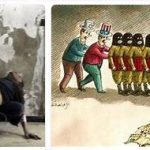Donald Trump scolds trade agreements, threatens tariffs and has gone to trade war against China. Will the World Trade Organization become the president’s next victim?
- Is President Trump allowed to impose tariffs on whomever he wants?
- What will be the effects of US trade policy?
- Is Trump’s Customs War Crisis in World Trade Organization?
Under President Donald Trump, the United States has imposed tariffs on imports from China. The Chinese have responded with countermeasures, so that in 2019 we are talking about a trade war between the two. Trump has also imposed tariffs on imports of steel and aluminum from almost every country in the world, he has threatened a similar tariff for cars, and in May 2019 he threatened tariffs on all imports from Mexico until they restrict the flow of refugees to the United States, a country located in North America according to programingplease. Does Trump have the right to punish other countries with tariffs? And what does it do with the world economy? To answer this, we start by looking at how international trade and customs work.
2: What is the WTO?
Most countries in the world are members of the World Trade Organization (World Trade Organization, WTO). The organization’s task is to ensure a fair and predictable set of rules for international trade. This is done through three sub-agreements:
- GATT – for General Agreement on Tariffs and Trade.
- GATS – for General Agreement on Trade in Services.
- TRIPS – on Copyright and Technology Protection (Trade-Related Aspects of Intellectual Property Rights).
In addition, the WTO has a common system for resolving disputes between the parties (see fat box). The WTO is an intergovernmental organization in which the member countries control the work.
While the GATT agreement dates from 1947 and was signed by 23 countries (including Norway), the rest of the agreement was reached when the WTO was established in 1995. The World Trade Organization currently has 164 member states.
3: Rules for customs
Customs duties are a tax paid by importers when a product is imported. Through the GATT / WTO, tariffs have been reduced, especially in rich countries, but tariffs are still important.
Figure 1 shows average tariffs in 2017 for some countries and the EU. In the figure, we distinguish between agricultural goods and other goods, where the latter are mostly industrial goods and account for a large part of trade. Norway has removed almost all tariffs for industrial goods, but for agricultural goods we have among the highest tariffs in the world. This protects Norwegian agriculture, but also means that Norway has among the world’s highest prices for food.
GATT has negotiated upper limits for customs duties on each individual product, so-called bound customs duties . A country may have lower tariffs, but not cross the upper limits. For example, Norway has an average bound duty of 133.5 per cent for agricultural products, in other words much higher than the applied duty in Figure 1. For industrial goods in the USA, bound duty is on average 3.2 per cent, so Trump has little room for maneuver. to set up customs.
Equal treatment is a main rule in the WTO, often called the principle of equal treatment or “best conditions” (MFN = Most Favored Nation). For customs, this means that you must have the same customs duties towards all other WTO members. It is therefore not possible to have tariffs according to the “snout factor”, with different rates for different countries. However, there are two important exceptions to this principle:
- There may be lower or no tariffs in free trade agreements with individual countries, if the agreement covers a significant part of the trade. For example, in 2019 Norway has free trade agreements with as many as 69 countries.
- The WTO also allows for lower tariffs on imports from developing countries (tariff preferences). As a result, many rich countries, including Norway, have introduced lower tariffs on imports from developing countries, and zero tariffs on imports from the poorest countries.
4: WTO safety valves
In addition to the general exceptions to the principle of equal treatment, the WTO also has some “safety valves” that allow the introduction of tariffs in certain situations to protect its own production:
- If imports from a country take place at abnormally low prices, the WTO allows the imposition of so-called anti- dumping duties corresponding to the price difference. This is a frequently used measure. Even before Trump’s steel tariffs, there were anti-dumping tariffs on most US steel imports from China.
- Customs duties can also be introduced if other countries subsidize (provide state aid to) production in a way that is not permitted in the WTO. The US measure against Norwegian salmon, which lasted for over 20 years until 2012, was, for example, a combination of anti-dumping and anti- subsidy tariffs. For industrial goods, the WTO does not allow targeted state aid to individual industries, and the USA believed in 1991 that this applied to the aquaculture industry in Norway.
- A third safety valve in the WTO is so-called safeguards(security measures): If imports increase sharply and threaten a country’s own production, tariffs or quotas can be used temporarily to protect its own industry. In February 2018, Trump introduced protection measures of this type for solar panels and washing machines. The reasoning was not entirely convincing and some countries have complained in the WTO, but these were measures that complied with WTO regulations and practices.
The WTO is thus not full free trade: Customs is allowed and a certain amount of protectionism is possible – but based on certain rules and with requirements for argumentation and evidence.









